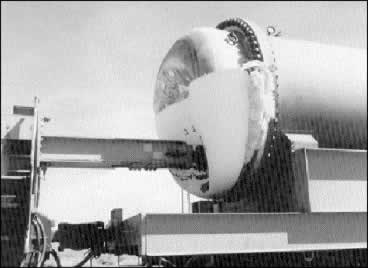
Impact car ram after impact
The production, transportation, and use of hazardous materials are essential to the economy of the United States, Canada, and Mexico, and to their technology-dependent societies. The increased harmonization of regulations, better data, and new technology, and cooperative efforts between shippers, carriers, tank car builders, and governments influence safe transport practices for hazardous materials.
Rail transportation of hazardous materials in the United States is recognized to be the safest method of moving large quantities of chemicals over long distances. Recent statistics show that the rail industry's safety performance, as a whole, is improving. In particular, the vast majority of hazardous materials shipped by rail tank car every year arrive safely and without incident, and railroads generally have an outstanding record in moving shipments of hazardous materials safely.
For all hazardous materials, in the 12 years from 1994 through 2005, hazardous materials released in railroad accidents resulted in a total of 14 fatalities. In the same period, hazardous materials released in highway accidents resulted in a total of 116 fatalities. Continuous sponsored industry and government improvements in rail equipment, tank car and container design and construction, and inspection and maintenance methods have resulted in reducing derailments, spills, leaks, and casualties while the volume of traffic increases.
Objectives
Recognize incident trends by analyzing the accident/incident database and find,
through research, ways to minimize the incident rate of leaks, spills, and damage to
the environment due to hazardous materials releases.
Lower the potential for loss of lading and reduce the exposure of hazardous materials to the
environment and population in the event of a train accident caused by a derailment.
Improve methods of inspection for tank car damage through the investigation of promising
non-destructive detection technologies.
Investigate emerging technologies and take advantage of national and international research
programs that will increase the safety and efficiency of rail transportation.
Continue to provide support to the Office of Safety's goals through the development of
regulations and standards, as well as take a more active role in the tank car design approval
process as a result of the changing roles of industry partners as the industry evolves.
Goals
The hazardous materials research program includes fostering innovation throughout the industry, helping development of new regulations and design standards that improve the safety and integrity of tank cars and other packages carrying hazardous materials, and continuing growth of new research programs that satisfy the need of the industry and government.
Fostering innovation. Throughout the years, FRA has had a substantial influence on technical research and development. These public research and development programs have helped the development of new technology by advancing basic knowledge and understanding. The information generated by this research is the most important product, helping to improve the new product or process to improve the package.
Regulations and standards. Since regulation of private activity is accomplished by specifying a limited number of conforming designs and processes, considerable economic pressure exists to continue use of the technology embedded in those designs and processes. It is the nature of government regulations that acceptable designs will not generally include the latest and most efficient technologies. FRA wants to devise strategic and tactical plans that include getting involved in areas where a clear societal benefit exists, causing the least disruption to the economic process. These plans will include new technologies to improve the tank car's integrity, as well as safe and rapid transport of hazardous materials.